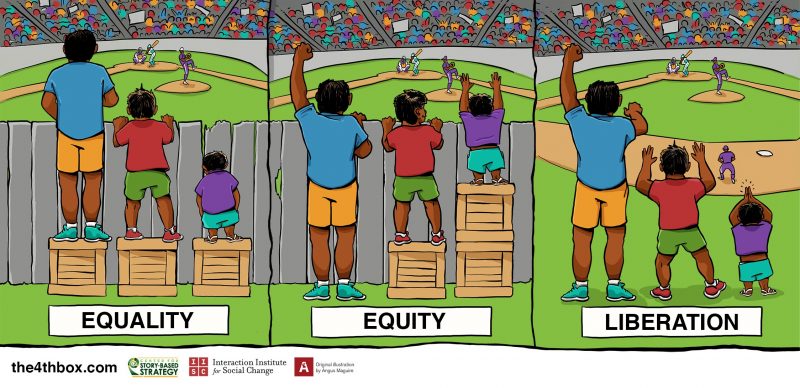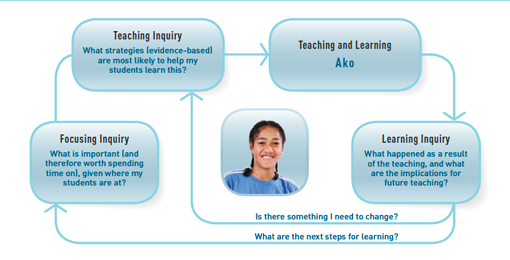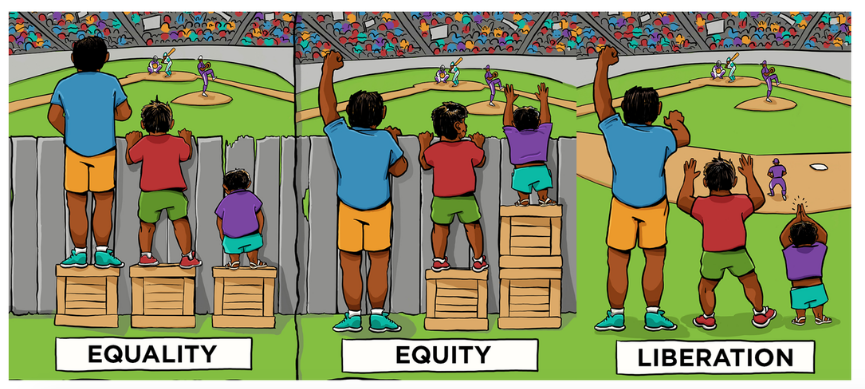I have come to believe however that there are a series of factors, some necessary but not sufficient, and then others from which we leverage the significant learning gains for our rangatahi.
I think we begin with the Viviane Robinson framework for student centred leadership. This has been my 'bible' for thinking and for action around leadership since I took up Principalship in 2016, and continues to be my guiding framework. It looks like this:
What do I think this has looked like in our Hornby High School context?
The "necessary' factors I mentioned in my opening paragraph have been, I think, a relentless focus on:
- Relationship building
- Valuing all students' cultures in our school community
- Strong vision, consistently articulated and applied
- Quality physical infrastructure with our whole school rebuild
- Strategic resourcing of key initiatives with suitable staffing
- Effective use of digital technology that is founded on a consistent and overt/completely visible pedagogy
- Consistency and coherence in everything that we do. That is, there has been NO jumping from one fad to the next. We call this 'staying on the bus'. This metaphor comes from the 'Helsinki bus theory'.
- The demand that we have clarity in our values, and that all of us (staff and students alike) live and apply those values in all that we do, as a basis for strong positive relationships. In our case, we apply PB4L, restorative practices, and restorative circles, to conflict resolution and relationship building. I have consistently talked up the need for kindness.
These things are essential to school improvement, and there are more that we do that I have just not mentioned. Our new school buildings have had a significant impact on the mindsets of our students. I would like to think that more of our students now generally feel valued by our kura, and our country, because they have been given the chance to live and learn in the school facilities that they always deserved. The design we chose for our spaces, a mix of collaborative and single cell spaces, has allowed staff the opportunity to review their pedagogy, and to put into effect things they learned when we encouraged them to 'play in the sandpit' between 2016 and 2019, to try out ideas that ranged from project based learning to passion projects, from knocking out walls in classrooms due for demolition to cross curriculum learning opportunities.
We have seen the dramatic impact of digital technology, and our Learn Create Share pedagogy, on student outcomes, with writing progress accelerated at twice national averages, and reading and maths accelerating at 1.5x national averages.
My current opinion is that these are all things that have been necessary to improvement in our kura. However I suspect that on their own they would have relatively limited impact unless combined with what I think are THE game changers in schools:
- Embedded inquiry
- Curriculum shift
- The Manaiakalani Porgramme
Our curriculum shift is already significant. If anything, this is where e are disrupting education. I often say that I am a believer in evolution not revolution when it comes to organisational change. Why? When we have revolution we are, far too often, left with bodies in the streets. I'd rather we embark on a change journey that sees everyone who wants to 'stay on the bus' still standing at the end (if there is ever an end, that is). So our curriculum is evolving, perhaps more quickly than some would like, perhaps less quickly than others would like, but nevertheless it is evolving. Our junior 'connected curriculum' is more adaptive, more engaging, more relevant. It connects more clearly with the front end of the national curriculum, supporting as it does the development of the five key competencies that we still think are essential to success. In one of this year's junior prize giving speeches, I said this:
I have chosen to talk about this today because your ability to be successful at school is in part determined by your ability to manage your emotions. The fancy phrase we use is your ability to self regulate. Work hard to get better at that. We all struggle with the challenge, regardless of age.The Manaiakalani Programme has provided Hornby High School with a visible and clearly articulated pedagogy that is proven to make a difference. Without this, the application of digital devices is unlikely to have made much of a difference. My opinion on this mater is strong: placing digital technology into the hands of students and teachers without changing the way teachers work, without changing the way learning is caused (the pedagogy), is doomed to failure. TMP gives us the pedagogy and the visibility that is necessary to make a difference.
And then there is the professional game changer: inquiry. For the non educators amongst readers, this is the principle that teachers inquiring into what they do, investigating hunches about what will improve learning for their students, are far more likely to adapt and improve their practice. The process looks something like this:
Let's face it, NONE of us begins our lives in this profession knowing everything that we need to be successful. In fact, on a side note, I suggest that it is even worse than that, that much of what passes for initial teacher education in New Zealand is not fit for purpose, but that's a different issue. So, as teachers we all need to be curious learners. we need to ask ourselves how we can do this better.
At Hornby High School I believe that what I am seeing is the progressive adoption of inquiry as the driver behind improving what we do. As my colleagues have inquired, made changes, reflected, and then written of what they have done, I have seen reflection that I would describe as transformative. What's more, this has taken place with the support of Professional Learning Groups, many of which have involved collaboration across our Kāhui Ako. This means that we have had primary and secondary trained colleagues collaborating on their inquiries. This is a rich source of knowledge sharing and transfer, and the potential for impact on our learners is huge.
Amongst the benefits of being a Manaiakalani school are that we have a clearly articulated pedagogy (Learn Create Share) around which to focus all inquiry, with hunches often formed based around the mass of great data with which we are blessed. We are able to inquire into what we call 'high shift practices'. In short we are beginning to build a true inquiry culture that focusses on improving outcomes for learners.
That in itself is the high shift practice. I would suggest that while new buildings and digital devices are necessary for transformative school improvement, in and of themselves they are not sufficient. To create those big shifts we seek, we need inquiry, and a future focussed curriculum, and....














